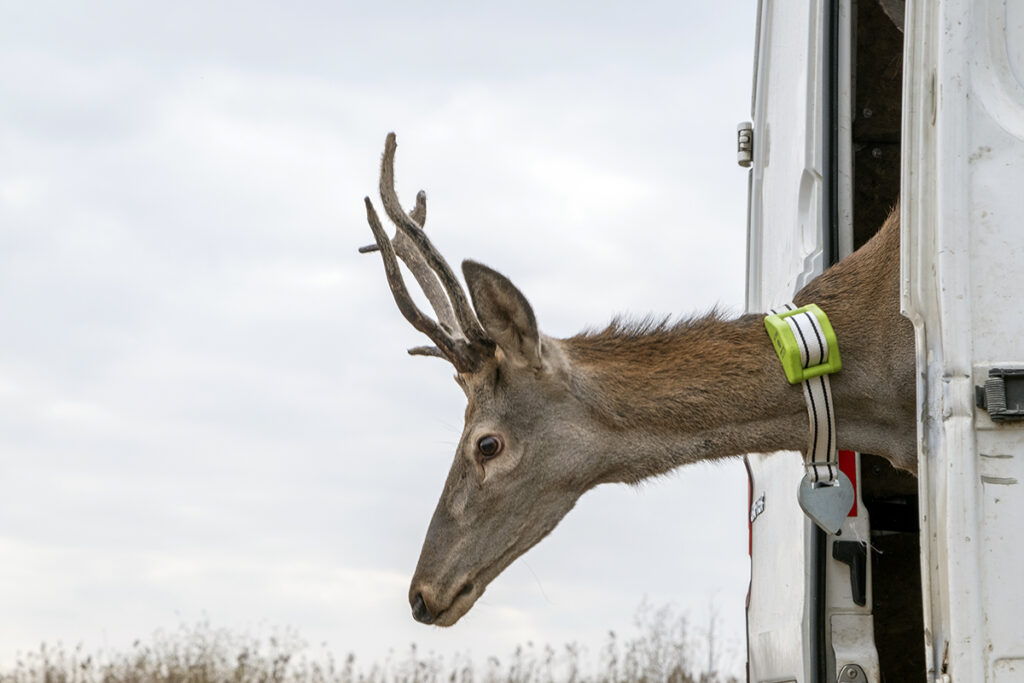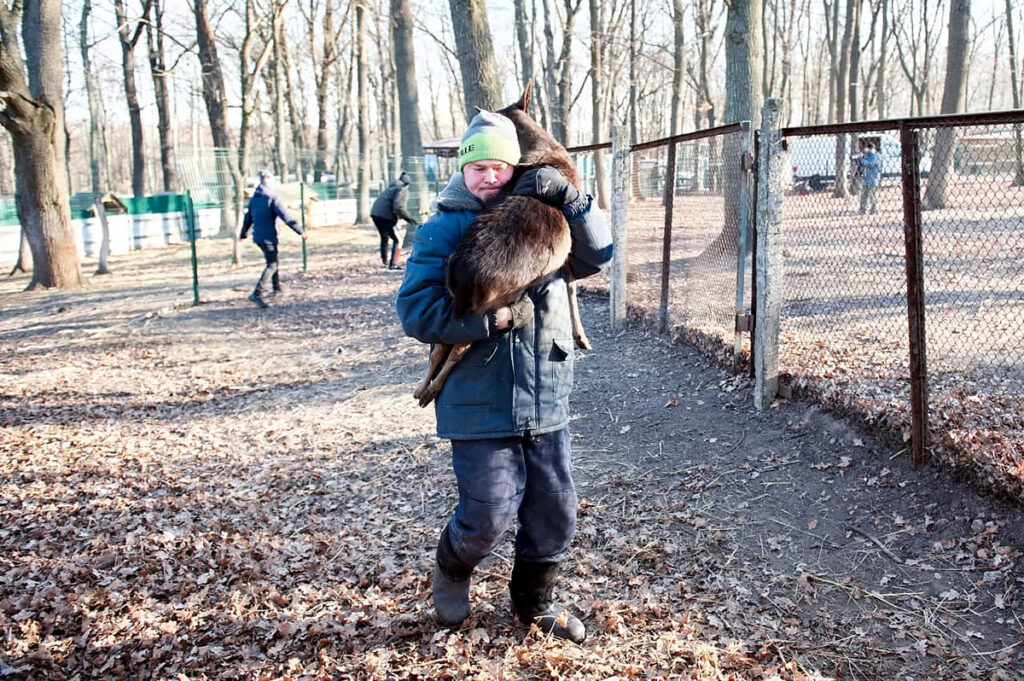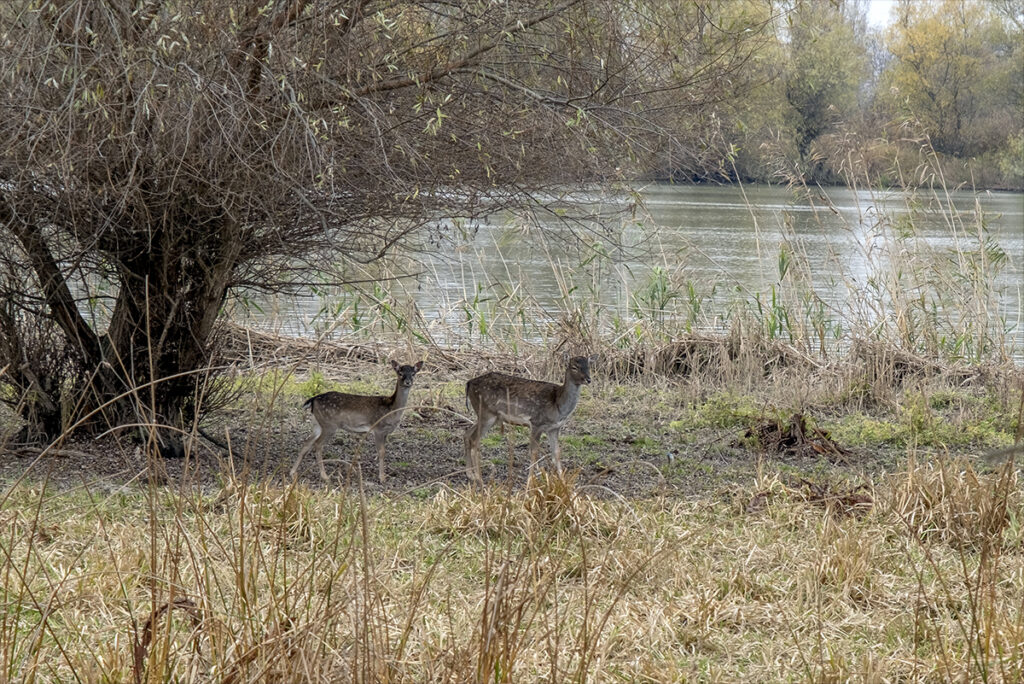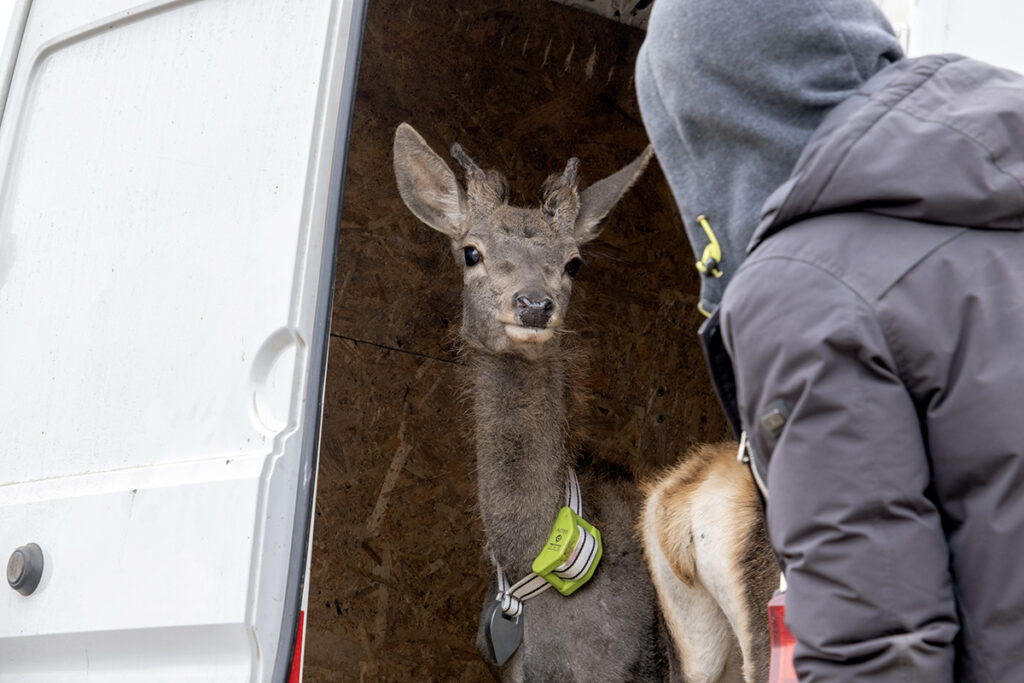3 red deers and 3 fallow deers settled on the Ermakiv island in the Danube Biosphere Reserve as part of the partnership between Rewilding Ukraine and Feldman Ecopark. Animals will complement the natural grazing on the island and promote eco-tourism in the region.

The red and fallow deers were rehabilitated at Feldman Ecopark and then arrived in the Danube region in 900 kilometers to come back to the wild nature on Ermakiv Island in Ukraine. This is part of a joint project of two organizations to restore populations of large ungulates in the Danube Delta. Among the animals, there are both males and females. On the island, they will be protected and, at the same time, will be able to move freely on a fairly large area.
“We welcome today’s release of red and fallow deers, that is the first step in a long-term partnership between Rewilding Ukraine and Feldman Ecopark. Together we will be able to achieve more in restoring the nature of our country. The animals that have been just released will complement the variety of large herbivores on the island. Ermakiv Island is a fairly large river island with an area of more than 23 km2. Therefore, in order to fully restore the natural grazing process, as well as to create genetically diverse and stable populations, it is very important to release animals from different areas and in sufficient numbers,” explains Mykhailo Nesterenko, Executive Director of Rewilding Ukraine.

Natural grazing allows maintaining the diversity of landscapes on the island. Due to the activity of large herbivores, there are meadows, lakes, and a wealth of plant species. The mosaic of landscapes attracts a large variety of insects, birds, and mammals. Also, herbivores eat excessive vegetation, which, drying up, could become inflamed. Thus, the risk of fires is significantly reduced. In addition, red and fallow deer, along with other large animals of the island, are interesting objects for tourists. After all, there are beautiful landscapes in our country, but there are almost no places where you can see large wild animals that roam freely in nature.
“We have always been and remain open to cooperation. Preservation of wild animals, restoration of biocenoses, and responsible reintroduction are the goals of the creation of Feldman Ecopark. This is the first trial stage of our cooperation, in the future we plan to continue the releases of animals that successfully breed in Feldman Ecopark and are suitable for the Rewilding Ukraine’s program. We always support joint projects, because only by joint efforts can we help Nature to reborn, give hope to our children and grandchildren to see and appreciate all the diversity and splendor of wildlife,” said Oleksandr Feldman, People’s Deputy of Ukraine, President of the World Open Fund for Animal Rehabilitation and Reintroduction (WOFARR), founder of Feldman Ecopark.

“It would seem that six animals are a drop in the ocean, but during the process of formation of a viable population the inbreeding should be avoided, so we will release animals in small “portions” from different parents, which is very important – especially at the beginning of the group formation. And by the next breeding season, we will replenish the ungulate’s population with “new, unrelated blood,” explained Andriy Gapchenko, head of the science and monitoring department at Feldman Ecopark.
Ermakiv Island is located in the buffer zone of the Danube Biosphere Reserve, near Vilkove. In 2019, with the support and active participation of the Reserve and the tenant of the island “Ermak” company the process of restoring natural grazing on the island was launched. Wild species of large herbivores, typical to the delta or close to them in environmental functions were used. A herd of water buffaloes from Transcarpathia and two herds of wild Konik horses from Latvian reserves settled on Ermakiv. They were later joined by a small herd of red deer and a herd of fallow deer from southern Ukraine.

Deer and fallow deer, as many years ago
Red deer once inhabited the landscapes of Ukraine, but later its numbers decreased significantly due to poaching and destruction of natural habitats. Red deer – a large ungulate, the male can reach more than 2 meters in length and weigh about 300 kg. Males of this species are decorated with huge horns, which help them to attract females and fight with rivals to defend the territory and their “harem”. Also, during the chase, males determine the championship by arranging roar battles, which can last for hours.
European fallow deer has a smaller size (length up to 2 meters and weighs about 100 kg) and a spectacular appearance: large eyes and ears, spotted color, and characteristic spade-like horns in males.